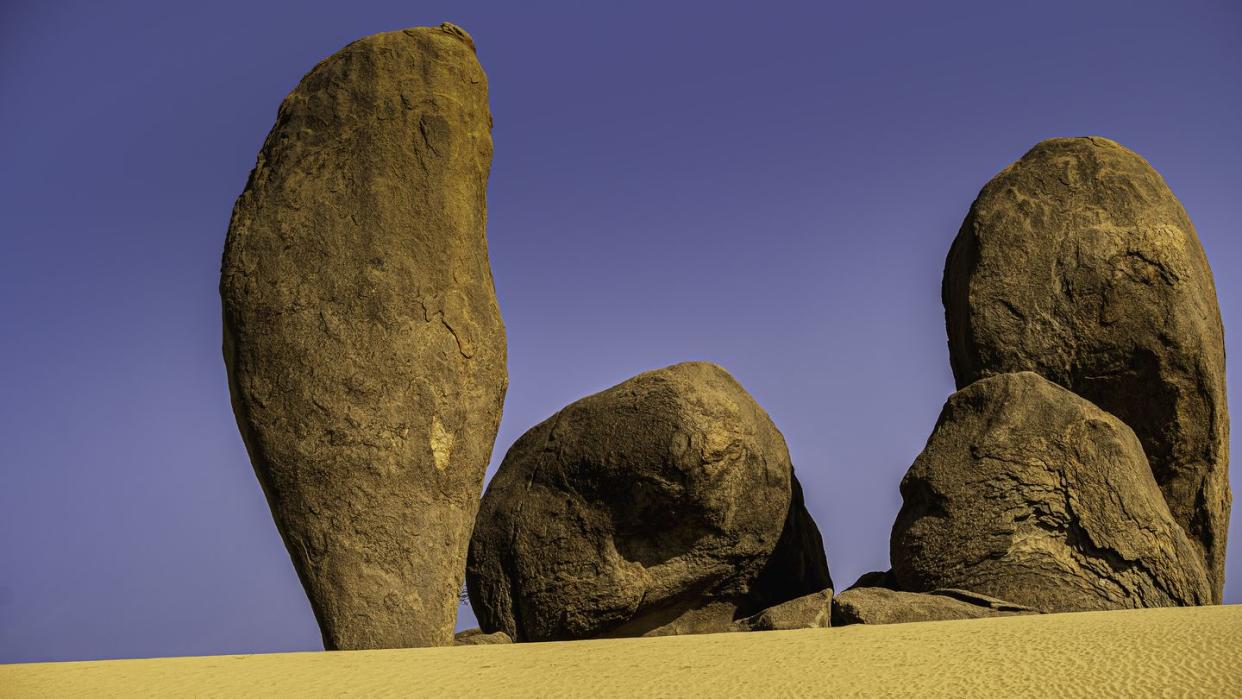Archaeologists Found 345 Ancient Stone Circles That Tell a New Story About Humans

Archaeologists discovered roughly 345 standing stone circles in Saudi Arabia using aerial surveys.
Experts believe the 7,000-year-old structures were once houses, complete with doorways and roofs.
The finding serves as evidence for Neolithic occupation of northwest Saudi Arabia throughout the 6th and 5th millennia B.C.
When we hear about standing stone circles, we often think of ritualistic structures akin to Stonehenge. But it turns out that a specific set of stone circles, left behind by Neolithic populations from the 6th and 5th millennia B.C., may be the remnants of something far more domestic: simple family homes.
Archaeologists recently discovered a whole mess of these circles—roughly 345, actually—in Saudi Arabia using aerial surveillance techniques. “These structures were individual dwellings, constructed in concentrations of varying numbers with associated domestic installations, such as hearths,” the research time behind the find, who published their study in Levant, explained. “The standing stone circle sites presented in this paper demonstrate a scale of Neolithic occupation not previously recognized in Saudi Arabia.”
Discovered in the Harrat al ‘Uwayrid lava field, the circles range in diameter from 13 to 26 feet, and all date to about 7,000 years ago. The team found evidence of stone walls and at least one doorway, and they believe the structures would have had roofs as well—either made from additional stones or other organic matter.
“Globally, early domestic architecture was always round, and rectangular houses only appear in the later Neolithic,” Jane McMahon, an honorary research fellow at the University of Western Australia and lead author of the paper, told Live Science.
The research team writes in the study that additional evidence found in the region supports a growing mix of human activity in the area during the time of the stone houses. Everything from the basalt stone tools to the animal remains found in the area indicated a mixed economy, supported by both domesticated and wild species and highlighted by the remains of sheep, goats, and cattle. The discovery of standing stone houses falls in line with similar ancient stone houses located in Jordan from roughly 500 years prior, showing a potential link between people from Jordan and those who lived in northwest Saudi Arabia.
Along with the stone houses, the team found rectangular structures made of stone. These have been dubbed mustatil—Arabic for rectangle—and the researchers believe that they may have been used for the sacrifice of cattle. According to the paper, it’s “likely that these two megalithic structure types are aspects of a single cultural entity.”
That entity likely pre-dated typical farming in a landscape, which wasn’t as dry at the time as the area is today. “There’s no evidence of farming domesticated species of plants like wheat and barley, but gathering wild plants likely took place,” McMahon told Live Science, “and perhaps manipulating the landscape to increase the likelihood and yield of wild species.”
Along with the bevy of stone, the area yielded seashells, believed to be from the Red Sea, which is roughly 75 miles away. That find suggests a developing network of trade and exchange that required mobility, giving an entirely fresh perspective on the rise of populations 7,000 years ago in northwest Saudi Arabia.
You Might Also Like

